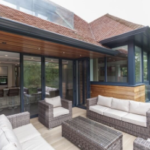Disturbing at first, but fascinating afterward, the Japanese surprises us as much by their shyness as by their eccentricity. To consider them immature would be a mistake. Their story, still deeply rooted in their education, shows us how grounded they are. But on old land, with the rules of another time for some and that stifles them. What if all this was just a game? For the use of the osaka hotels this is important now.
Nevertheless, the Japanese receive us with a big smile, bend over backward to help us, but in their language only because English is not a priority, except for some young Tokyoites who wish, too, to travel the world.
The language barrier in Japan
As mentioned above, English is not commonly spoken in Japan. On our first trip to Japan, we were afraid of finding no indication in the subway, or street signs in English.

But Japan has made a lot of effort for tourism, and in the most touristic places, practically everything is written in both languages. We even saw some machines in the subway that offered French. And if you cannot find the information, you can be sure that you will be helped
In addition, free WiFi is readily available in many public places in Japan and you can use Google Translator to translate some conversations.
Religions in Japan
The two main religions of Japan are Shintoism and Buddhism. Shintoism was born in Japan, while Buddhism was imported from China and Korea. Some Japanese practice both simultaneously, and go to a temple of one and the other according to the events of their lives. The difference between these two religions is simple: Shintoism is a polytheistic belief with tens of thousands of divinities, Buddhism is a philosophy taught by Buddha to attain enlightenment.
On the other hand, it must be admitted that it is sometimes difficult to differentiate their places of worship. And yet some details allow to recognize them.
First, we speak of a temple (in Japanese “tera” or “dera” or suffix “-Ji”) Buddhist and shrine (“jinja” or “Taisha” or the suffix “-gu”) Shinto. So on your plan or at the entrance of the place, you will already know where you put your feet.
The entrance to the Shinto Sanctuary is always under one or more red porticos called torii, which delimits the sacred space. The entrance to the Buddhist temple is recognizable by a door (“my”), often wooden and sometimes gigantic. In the temples, there is, of course, a Buddha statue.
Is it easy to travel to Japan?
Traveling to Japan may seem difficult at first sight and primarily because of the language barrier. But past this impression, it is easy and even fun to stay there, thanks to excellent infrastructure, in an organized, clean and efficient country. If it scares you and it seems too complicated to organize it yourself, and you still want to roam, you can create a tailor-made trip to Japan.
Traveling to Japan with children?
Everything is not optimized for traveling with young children, because the Japanese do not use strollers like us. It will then change your transport habits. There are free public toilets everywhere and clean, with almost always facilities for changing babies.
Some typical restaurants are not suitable for children to eat at the counter or sit on the floor, and the subway makes it difficult to get around with a stroller. Most resorts do not have a lift, and the Tokyo Metro is very deep. Expect to climb many stairs each time.




